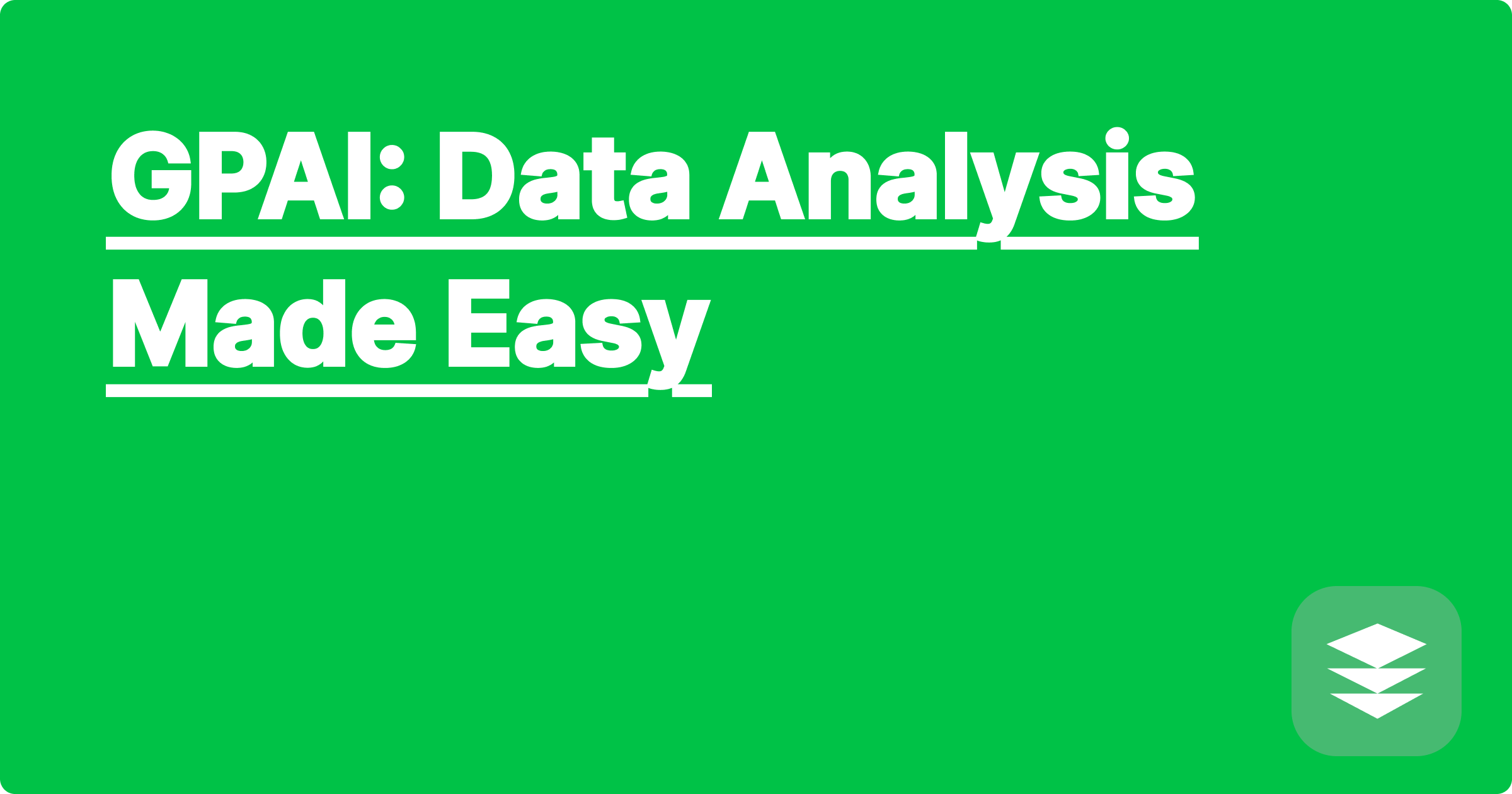
The sheer volume of data encountered in STEM fields can feel overwhelming. From complex datasets in research labs to the mountains of information needed to grasp advanced concepts, effectively analyzing and interpreting this data is crucial for success. Traditional methods often fall short, leaving students struggling to keep up and researchers bogged down in tedious manual processes. But imagine a world where data analysis becomes not a burden, but a seamless part of your learning and discovery process. This is the promise of AI-powered tools, offering a revolutionary approach to data analysis that empowers STEM students and researchers to unlock new levels of understanding and efficiency.
This blog post explores how AI platforms and tools can transform the STEM learning experience, making data analysis not just easier, but also more insightful. We'll delve into a fictional platform called GPAI (Generalized Personal AI), envisioning how such a system could personalize learning and streamline data processing. While GPAI is a hypothetical example, the principles and tools discussed are grounded in existing technologies, offering a glimpse into the future of STEM education and research. We'll also explore other readily available AI tools and provide practical examples, demonstrating how you can integrate these technologies into your workflow today.
STEM fields are inherently data-driven. Whether you're a biologist analyzing genomic sequences, a chemist modeling molecular interactions, or an engineer designing complex systems, data is the foundation of your work. However, the volume, complexity, and variety of this data can present significant challenges. Traditional data analysis methods often involve manual processing, requiring significant time and effort. This can be a major bottleneck, slowing down research progress and hindering learning. Furthermore, extracting meaningful insights from raw data requires specialized knowledge and skills, which can be a steep learning curve for students. The lack of personalized learning resources can also contribute to the problem, as students may struggle to grasp complex concepts without tailored guidance.
AI tools offer a powerful solution to these challenges, providing a range of capabilities to streamline data analysis and enhance learning. Imagine a platform like GPAI, which could personalize your learning journey based on your strengths and weaknesses. GPAI could analyze your past performance, identify areas where you need more support, and generate a customized learning plan. It could also recommend relevant resources, provide personalized feedback, and even generate practice problems tailored to your specific needs. Beyond GPAI, existing tools like ChatGPT, Claude, and Wolfram Alpha offer immediate benefits. ChatGPT and Claude can explain complex concepts, provide summaries of research papers, and even help with writing assignments. Wolfram Alpha excels at computational tasks, allowing you to perform complex calculations, visualize data, and explore mathematical concepts.
Integrating AI tools into your workflow can be surprisingly simple. Start by identifying your specific needs and challenges. Are you struggling with a particular concept? Do you need help analyzing a large dataset? Once you know what you need, explore the available AI tools and choose the one that best fits your requirements. For instance, if you need help understanding a complex equation, Wolfram Alpha might be the best choice. If you need to summarize a research paper, ChatGPT or Claude could be more helpful. Experiment with different tools and find the ones that work best for you. Then, gradually incorporate these tools into your daily routine, starting with small tasks and gradually increasing their usage as you become more comfortable.
Consider a biology student struggling to understand the intricacies of DNA replication. They could use ChatGPT to ask clarifying questions, receive explanations in plain language, and even generate analogies to aid comprehension. A chemistry student could use Wolfram Alpha to balance complex chemical equations or predict the outcome of a reaction. An engineering student could use AI-powered coding assistants to debug their code, optimize algorithms, and learn new programming techniques. In research, AI tools can automate tedious tasks like data cleaning and preprocessing, freeing up researchers to focus on higher-level analysis and interpretation. For example, an AI could be trained to identify patterns in large datasets, revealing hidden correlations that would be difficult to spot manually.
To maximize the benefits of AI tools, it's essential to develop effective strategies for their use. Don't rely on AI to do all the work for you. Instead, use it as a supplement to your own learning and research efforts. Be critical of the information provided by AI tools and always double-check the results. Remember that AI is a tool, not a replacement for human understanding and critical thinking. Use AI to enhance your learning, not to replace it. Furthermore, explore the different features and capabilities of each tool to fully leverage its potential. Don't be afraid to experiment and try new things. The more you use AI tools, the more proficient you will become, and the more value you will derive from them.
To truly unlock the potential of AI in your STEM journey, embrace a proactive approach. Begin by exploring the tools mentioned here, experimenting with their functionalities and identifying how they can address your specific needs. Seek out online resources and tutorials to deepen your understanding of these technologies. Connect with fellow students and researchers who are using AI in their work, sharing experiences and best practices. By actively integrating AI into your workflow, you can transform your approach to data analysis, accelerating your learning and empowering you to make significant contributions to your field. The future of STEM is interwoven with the power of AI, and by embracing these tools today, you can position yourself at the forefront of this exciting evolution.